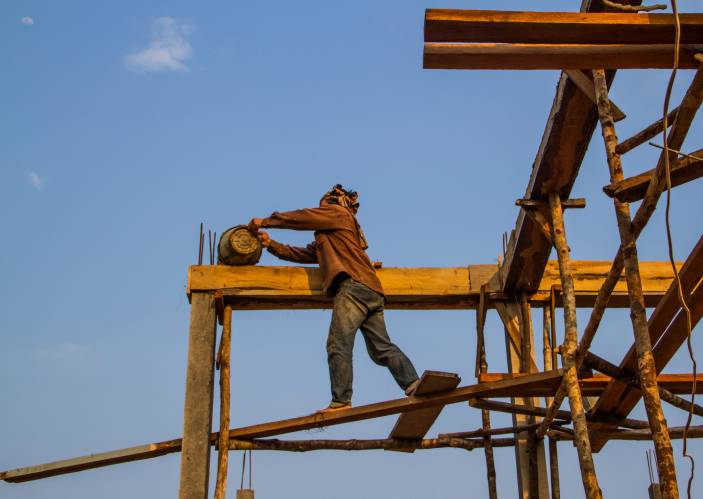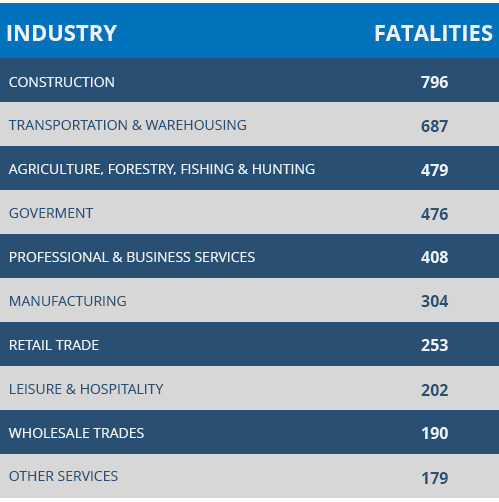
It’s not going out on a limb to say that the most dangerous jobs you can work are in the construction industry. This is because there is a plethora of data showing that construction work is the most likely to involve a workplace accident that results in injury or death.
The Occupational Safety and Health Administration (OSHA) reports that there are more fatal on-the-job injuries among construction workers than in any other single industry in the U.S.
Citing data from the U.S. Bureau of Labor (BLS) statistics, OSHA reports that 20.3 percent of worker fatalities in 2013 were in the construction industry. In other words, one out of every five workers killed on the job in our country worked in construction.

According to the BLS’s National Census of Fatal Occupational Injuries in 2013, the 796 fatal work injuries in construction accounted for the highest number of fatal work injuries of any industry sector.

Fortunately, even though there was little change from 2012 to 2013, construction fatalities have fallen by 36 percent since 2006, the report adds.
Elsewhere in the BLS report, we find that there were 831 fatalities among motor vehicle operators in the “transportation and material moving occupations.” But that figure encompasses several occupations and non-roadway incidents such as a tractor overturning in a farm field.

With 687 reported deaths, the “transportation and warehousing” industries rank second to construction for the number of fatal injuries in 2013. Warehousing occupations require the use of a variety of vehicles to transport goods.

The 10 most dangerous job sectors according to number of occupational fatalities in 2013 were:

WHY ARE CONSTRUCTION JOBS SO DANGEROUS?
Construction workers simply face a wide range of risks when they get to the job site each morning. The New York Labor Law lists many of these hazards, including:
- Falls from heights such as roofs, ladders and scaffolding
- Getting struck by objects and materials such as tools or debris
- Accidents involving trucks, forklifts, demolition and excavation machinery and equipment
- Burns from fires, explosions and electricity mishaps
- Using dangerous tools, machines and materials
- Handling and moving heavy materials
- Trench collapses or cave-ins
- Being exposed to the elements and air contaminants.
While some of these risks are inherent in construction work, many of these risks can be minimized or eliminated altogether by employers in the construction industry strictly following state and federal safety regulations.
In fact, New York Labor Law requires employers in the construction industry “to provide reasonable and adequate protection for the lives, health and safety” of their workers and all of those in the area of construction activity.
Any construction site owner or contractor who fails to live up to this duty – regardless of what a contract states or local customs and practices – may be held liable for any harm that results from this neglect.
